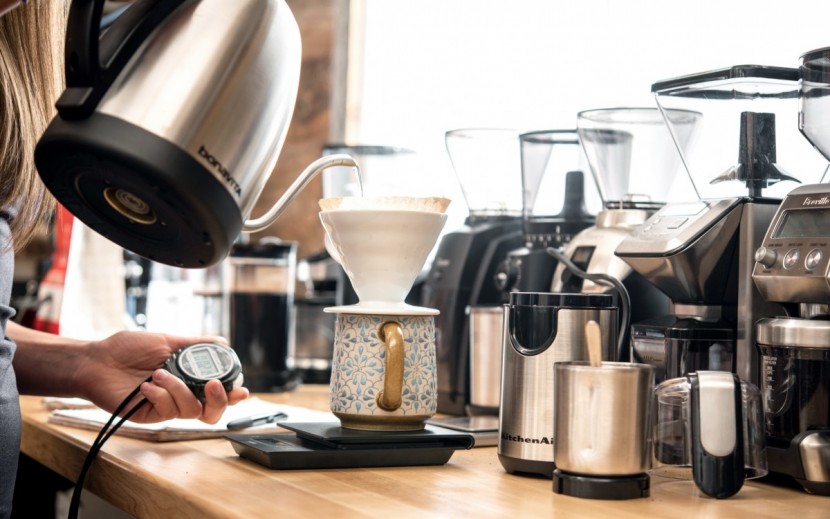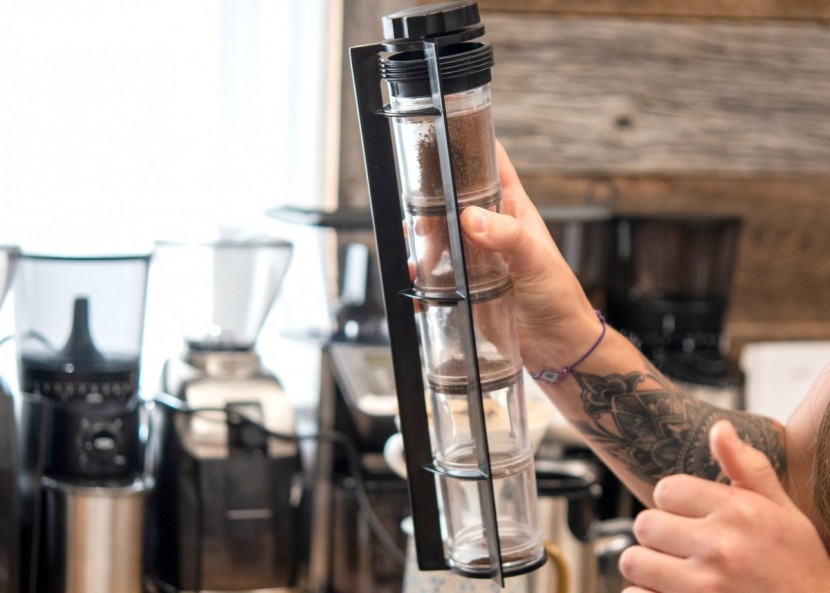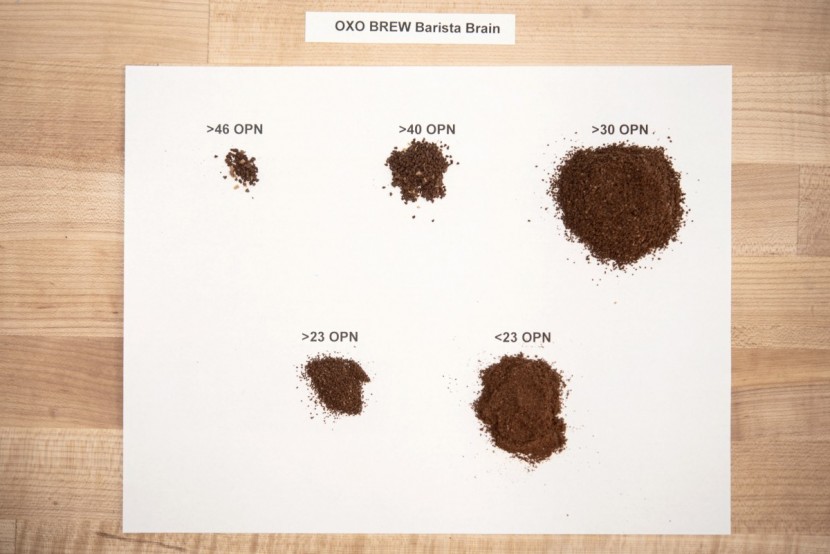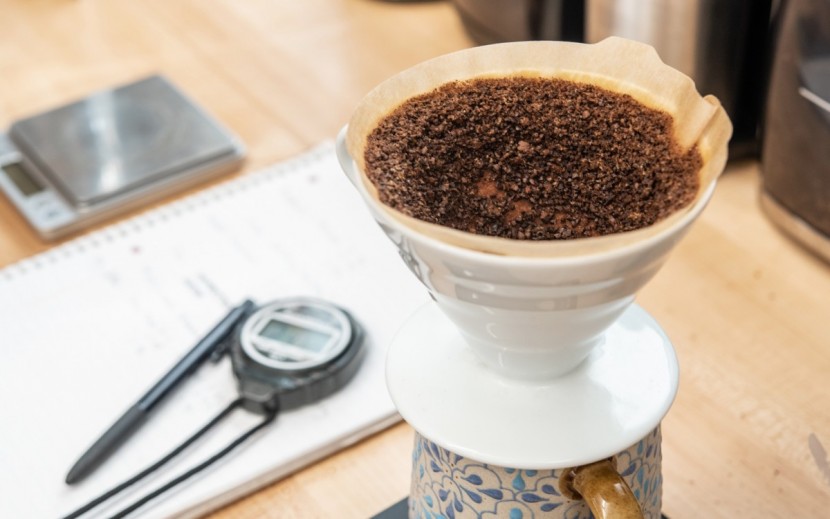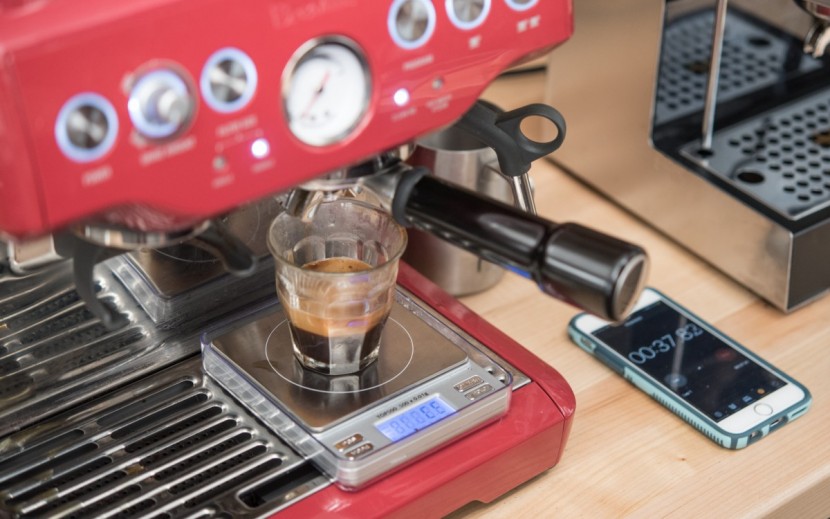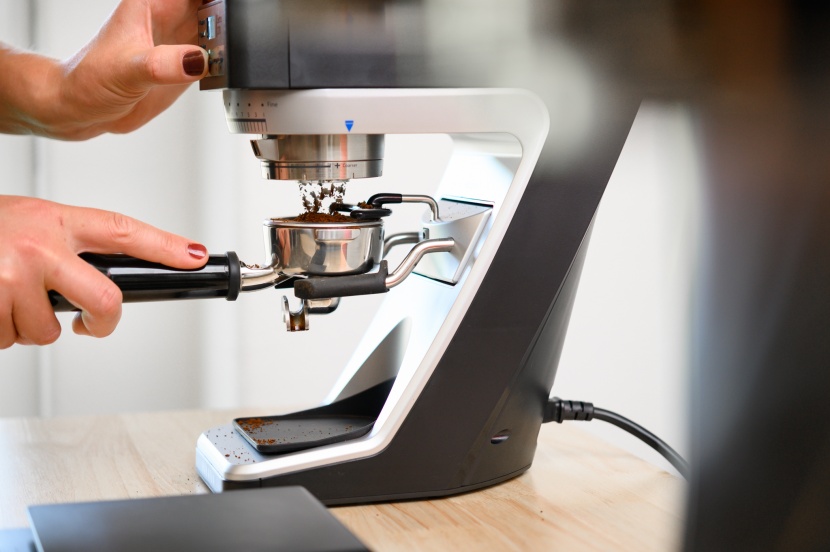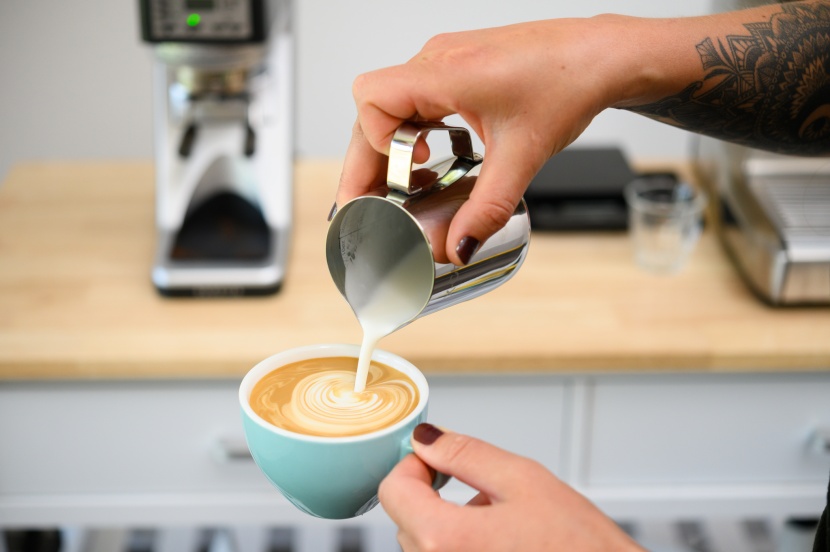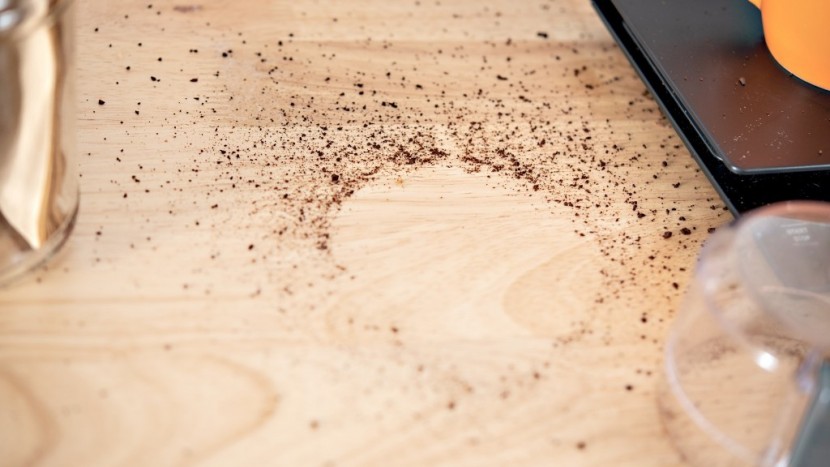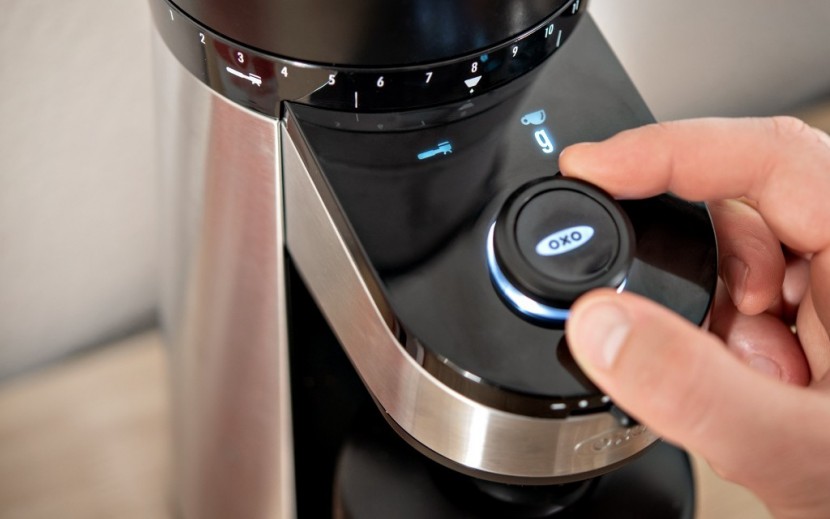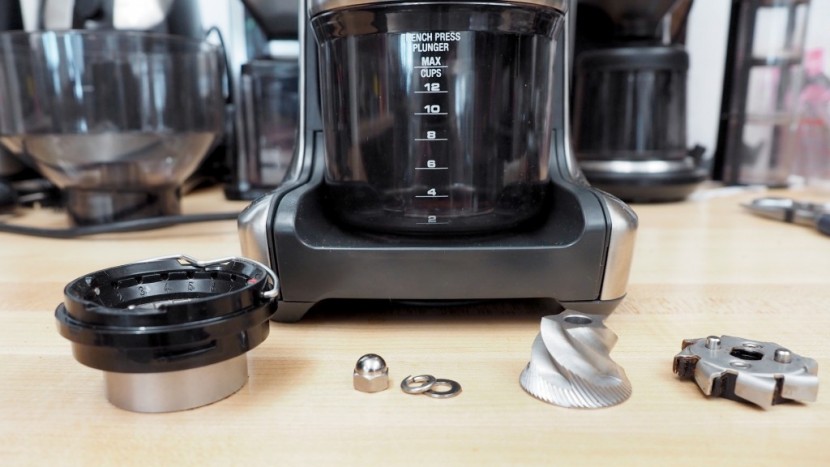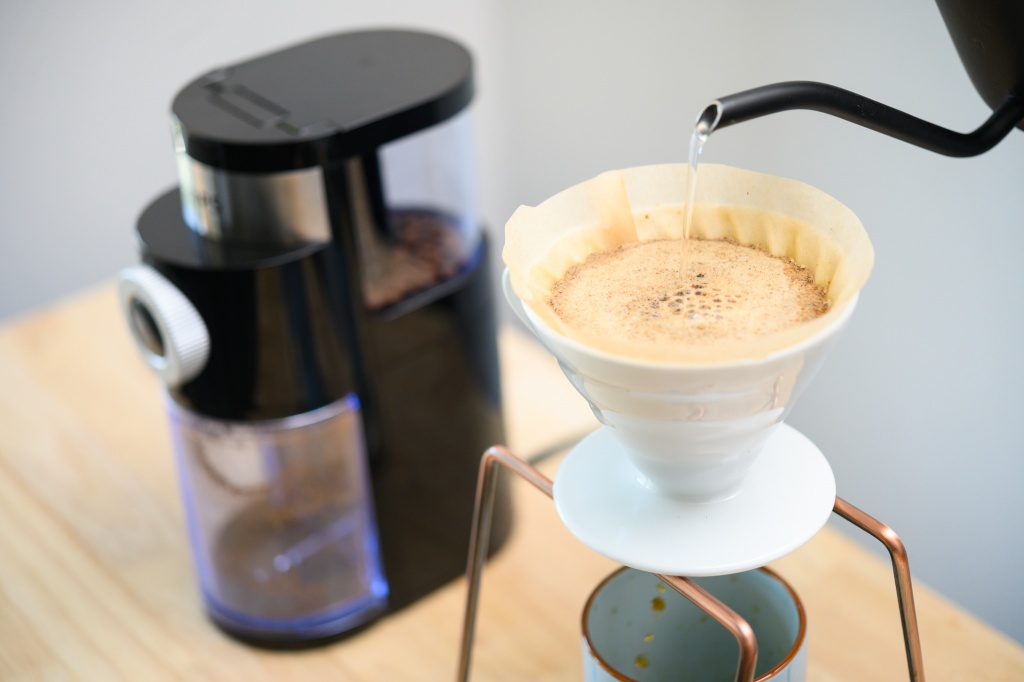If you are shopping for a coffee grinder, you're probably pretty precise about your coffee routine. We matched the meticulousness of a true coffee connoisseur in our grinder testing by dividing testing into four different metrics: grind consistency, cleanliness, user-friendliness, and noise.
Grind Consistency
A good coffee grinder gives your beans the best chance to fully express their nuances by creating a very consistent grind size. Conversely, a grinder that produces too many larger-sized grounds makes weak-tasting coffee. The larger particles allow water to move too quickly through the brew bed resulting in under-extracted coffee. On the other end of the spectrum, creating too much fine coffee dust leads to over-extraction and bitter-tasting coffee. The more grounds that fall into the sweet spot (the size will vary depending on brew method), the better your coffee will taste. Because grind consistency is such an essential piece to brewing the perfect cup, it was our most involved testing metric.
Coffee Bean Selection
We used single-origin beans for all of our tests, meaning the beans were sourced and processed from the same region and in the same fashion. While coffee blends are popular, they are by definition a mix of different types of beans. In addition, blends consist of various bean sizes, densities, origins, processing, and sometimes roast levels. Therefore, you get slightly different results from cup to cup, depending on the exact ratios of different beans in your brew. Using single-origin beans for our tests eliminated these extra variables.
Shaker Test
We ground 10 grams of coffee on the pour-over setting and put those through size 46, 40, 30, and 23 sieves. The score is based on how effectively the grounds accumulated in the optimal 23-30 OPN size range and how few were too coarse or too fine.
The shaker test was our most direct examination of grind consistency. We put 10 grams of grounds through a 4-tier set of sieves (size 46, 40, 30, and 23 OPN). The more grounds that fell into the ideal 23-30 OPN size range and the fewer that ended up at the extreme ends of the spectrum, the higher the grinder scored.
Pour-Over Test
This test gave us a more functional examination of grind consistency, which allowed us to quantify how closely each grinder could get to ideal brewing standards. Using a classic Hario V60 and the standard Stumptown pour-over guidelines, we noted how easy it was to dial the grind size to reach an ideal 3-minute extraction. Extraction time is the measure of the first pour to the last drop, including a 15-second pause at the beginning of the brewing process for the coffee bloom.
Once we had everything dialed, we made three pour-overs with each grinder, carefully timing the extraction of each. We then calculated the variation in those extraction times, with wider variation indicating less grind consistency from cup to cup and a tighter time showing better cup-to-cup consistency.
Range
Brewing a pour-over requires a medium-sized grind, so in this test, we looked at how well each model handled larger grind sizes (French press or cold brew) and smaller sizes (espresso).
While some grinders in our review can perform reasonably well as espresso grinders, most barely reach the largest grind size that could be considered appropriate for espresso. We used their espresso settings to see how well they perform at the finer end of the spectrum. We generally wouldn't recommend using these grinders in conjunction with an espresso machine, with the Baratza Sette 270 being the one exception.
In testing grind consistency for French press sizes, we redid the sieve test. The sieve allowed us to quantify how many grounds ended up in the ideal size range and how many grounds became fines (the bane of a good French press brew). For the much finer espresso grind, the sieve tests would be less meaningful, so we pulled multiple shots of espresso instead. We then timed the extraction for each shot, noting both how close to the ideal 30(ish) seconds each grinder could facilitate and how consistent the extraction time was between shots.
Dosing Accuracy
Consistency matters not only in grind size but in grind amount as well. For example, suppose you program your grinder for 21g of coffee one day, which ends up being 25g the next day. The day after that, it falls short to 17g. This isn't ideal because these variations will vastly alter the taste of your final brew.
To test dosing accuracy, we ground what the grinders indicated should be the same amount of coffee three times over with each device. We then weighed out each dose to see how similar they were. We repeated this test for multiple different grind sizes. The same coffee was used for all of these tests.
Taste Tests
Of course, we imbibed after brewing all of this coffee. We had everyone from our in-house barista and caffeine addicts to the “I only drink coffee when I'm tired” types taste and weigh in on each cup's attributes.
However, we didn't use these taste tests in our scoring because we believe producing a consistent grind is more indicative of a grinder's ability to make a wide variety of coffees taste good than subjective taste tests ever could be. With that said, almost to a T, all of our taste testers far preferred the coffee made with the models that scored highest in our grind consistency testing.
Cleanliness
As you can tell from our grind consistency testing, we ground lots of beans with each one of our grinders. Repeated grinding gave us plenty of opportunities to evaluate the messes (or lack thereof) created by each model. In ranking cleanliness, we focused on two things: static and shrapnel. If a grinder creates a lot of static, you'll end up with the fines sticking to surfaces, making somewhat of a mess. Some grinders shoot coffee outside of the bin, creating a mess on both the grinder and your counter. We ranked all models in our cleanliness metric based on how many issues we had and to what degree.
Ease of Use
Most of our user-friendliness testing focused on each device's interface. We evaluated their intuitiveness, general design, and how easy it was to dial in the preferred settings through repetitive use by multiple testers. We also assessed how simple it was to disassemble the actual grinding components for general cleaning and how clear the manufacturer's instructions were in walking one through that process.
Noise
To evaluate the noise metric for each machine, we started with an objective test by placing a decibel meter 2 feet away from each device.
However, we know from experience that measured volume constitutes only a small part of the annoyance. Pitch is the biggest aggravator. So, we had multiple testers subjectively rate the pitch of each model as well. We made sure to run these tests using various grind size settings, and as each model ran out of beans (some let out a scary screech at this point).
Conclusion
Putting together this review, we believe we created the most objective, repeatable, and exhaustive testing process possible. We genuinely hope that our coffee nerdery helps you figure out exactly which grinder will best complement your morning routine.

